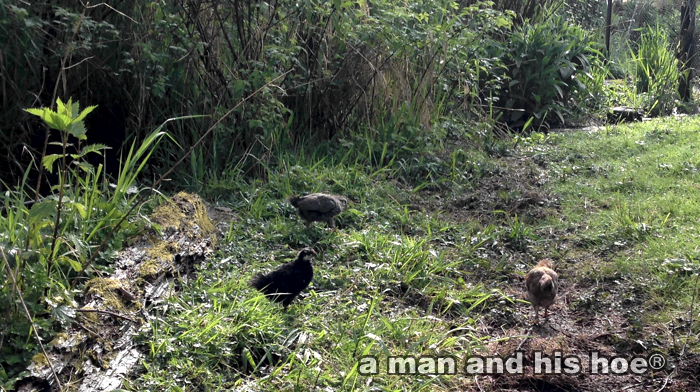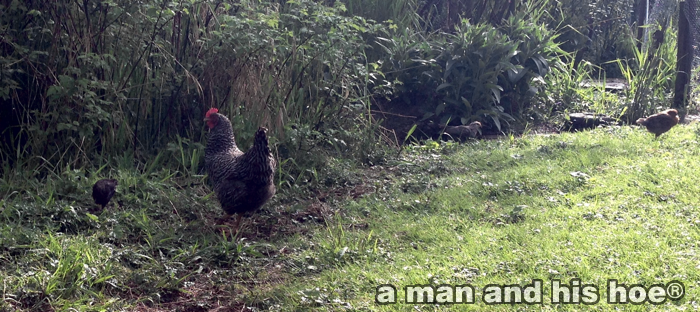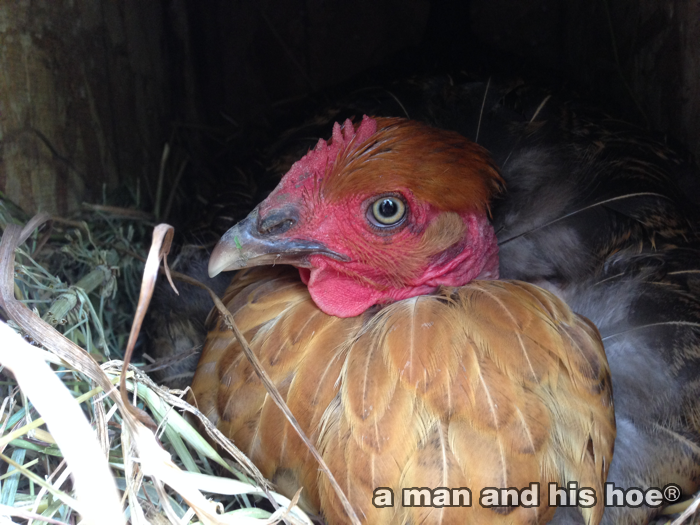Your cart is currently empty!
Soft on Their Feet? Imagine the Impossible

When a chicken walks over moss in the woods, does it notice how soft it is? Does it pause, close it’s eyes and wriggle it’s toes in the moss?

The one month old chicks are quite independent now. Can you spot the chick in this photo? She’s a long way from her mother and even her siblings.

Her siblings are also on their own. But they are all wondering where their mother is. They keep chirping for her. “Mother! Mother! Mother! Where are you?” they keep calling. “We’re over here! We’re over here!”

She hears their calls and joins them. What is interesting about hen and chick conversation, is that when chicks get lost, the hens do not respond to their calls by clucking. When a chick is lost or can’t see its mother, it will start chirping and chirp very loudly. The mother will go looking for it, but while the chick is chirping, she does not call back to let the chick know where she is.
But mothers are not always silent. When they find something good to eat, or when they sense danger, they have specific calls they make to alert their chicks. But if a chick should go missing, it’s up to the chick to tell it’s mother where it is.
This morning, Hazel has found a new nest to lay her egg. Most hens move around, laying eggs in a nest for a week or two, and then finding another nest. Someone will need to do a doctorate dissertation on the nest selection process hens use to pick out nests. This information could then be used for predictive analysis. This would enable someone with a flock of chickens to know each day, where each of the hens was going to lay her egg. This could be matched with their laying cycle, and an app on your iPhone could alert you in five or ten minutes in advance, where each hen in the flock was going to lay an egg. You could then set up your egg collection schedule to optimize egg collection.
Such information could free millions of hens from their cages and cramped egg laying houses. They could be set free onto pasture and woodland. A small army of slow moving, egg collecting robots could be directed to arrive at each nest, a few minutes after each egg was laid, to collect it. The system could also know each hen’s laying habits. Does she leave the nest immediately after laying her egg? Or does she settle down for five or ten minutes afterward? This way the robot could arrive precisely at the moment the hen leaves the nest. Since the robot would have information as to which hen’s egg it was collecting, it could stamp that information on the egg along with the date and time.

Customers would then have the ability to specify, “I only want eggs from Hazel,” or “I only want eggs from Barred Rocks.” The customization such a system could provide would be unlimited. Knowing each hen’s laying history, customers could request things like, “Give me a carton of the 100th egg hens have laid,” or “Give me eggs laid between 9:00 a.m. and 9:05 a.m.” Coupled with delivery robots, the system could deliver all the eggs directly to customers within hours of laying, or even faster. For those demanding customers who insist on receiving eggs so fresh they are still warm, the delivery robots could rush the eggs into the customer’s hands within a few minutes. Then the lucky customers could feel the still warm egg, close their eyes, and feel at one with the hen who laid the egg. They could magically sense that their egg was truly a living thing. Buying cold, supermarket eggs would soon be considered gauche, something no decent person would do. And the chickens could live lives of utmost bliss.
To create the future, you have to think fantastic thoughts.
Leave a Reply
You must be logged in to post a comment.